Wheels up! Cadillac Ranch is art for the open road
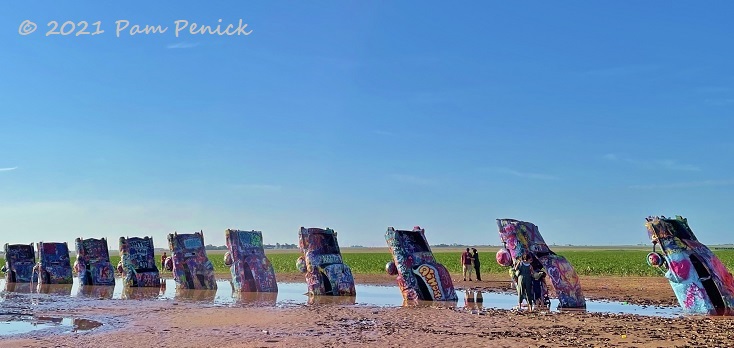
You’ve seen ’em: a line of 10 classic Caddies bucking like broncos, rear wheels and fins (when they were still intact) pointing skyward, noses deep in the red dirt of a field along Route 66. As we cruised through Amarillo, in the panhandle of West Texas, bound for Colorado a few weeks ago, we saw a sign for Cadillac Ranch. A moment’s consideration was all it took, and we turned our own car’s nose westward on a quick detour to see the world-famous roadside art installation.
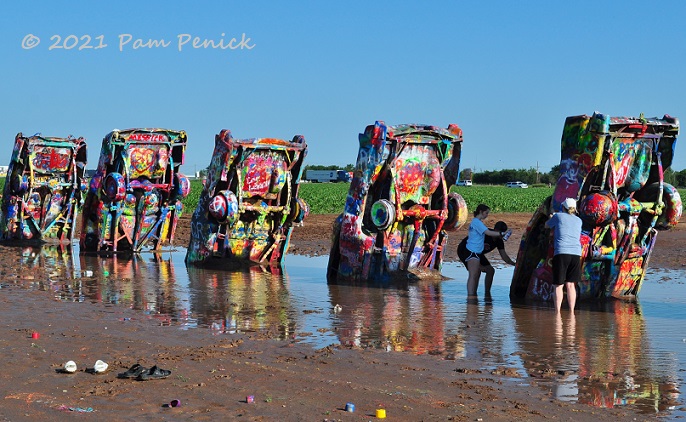
You park on the shoulder of the feeder for storied Route 66, lining up behind tourists’ cars and RVs from all across America, their license plates advertising the length of their pilgrimages: Minnesota, Nevada, North Carolina, Florida, New Jersey. Backed by a field of green, the Cadillacs line up facing west (how else?), arranged from earliest finned model to latest. You trod a beaten dirt path that quickly turns into a muddy soup of Krylon and Rust-Oleum caps and discarded shoes.
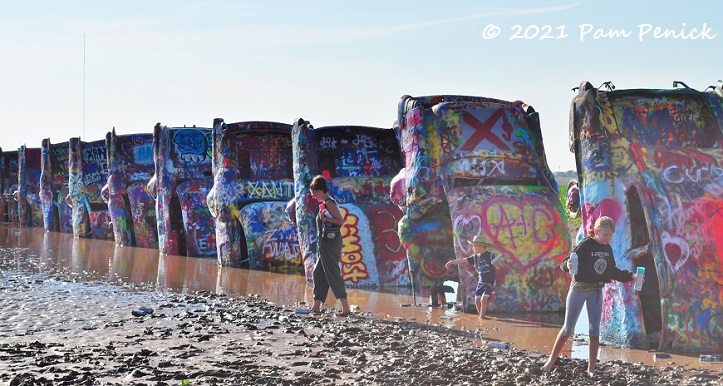
As you pick your way across semi-solid islands in the mud, most everyone else shucks their shoes and walks on with purpose, cans of spray paint clutched in both hands. A couple of quick shakes, paint lids are popped off, and hissing signatures are added.
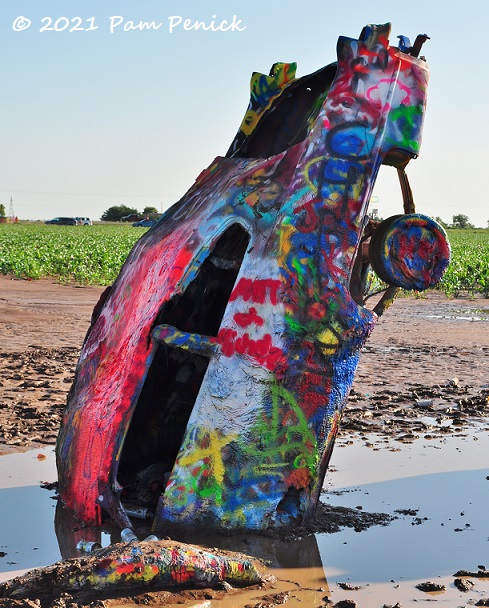
It’s interactive art that salutes — or satirizes? — the golden age of auto travel. As RoadsideAmerica.com puts it, “The Cadillacs have now been in the ground as art longer than they were on the road as cars. They are stripped to their battered frames, splattered in day-glo paint splooge, barely recognizable as automobiles. Yet Cadillac Ranch is more popular than ever. It’s become a ritual site for those who travel The Mother Road.”
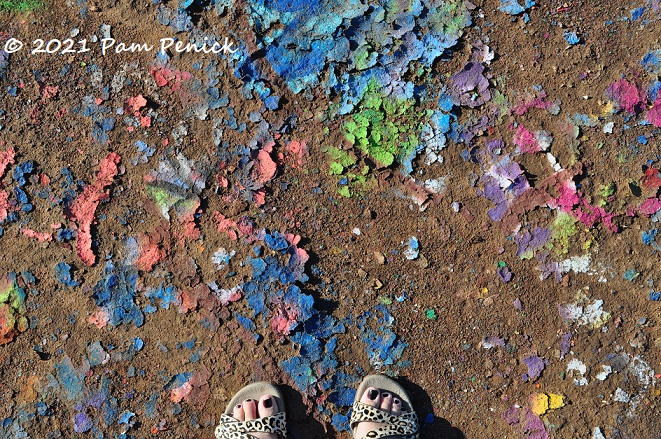
The Mother Road. The Main Street of America. Get your kicks on Route 66. Long since rerouted and decommissioned, Route 66 sputters on only as a ghost highway now, but people still drive here from all over just to put their own stamp on this icon of Americana.
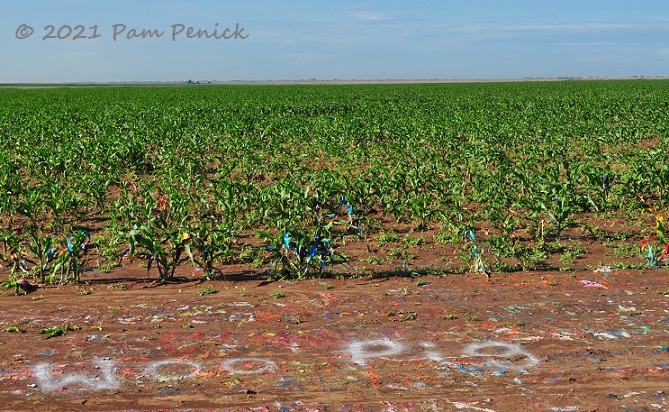
What it all signifies is anyone’s guess.
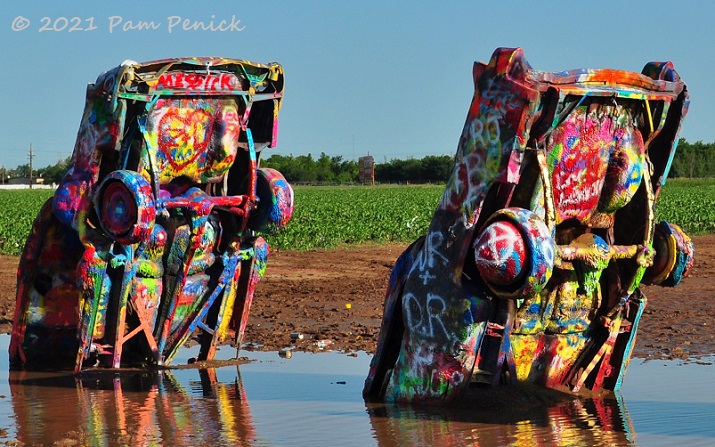
But the rainbowed cars and excited taggers — there’s even a food truck at the roadside — give the place a festive vibe.
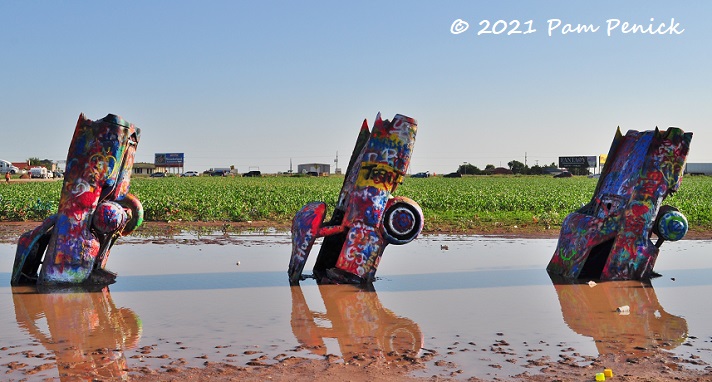
Thanks to Cadillac Ranch, we definitely got a few kicks on Route 66.
If you want to know what Cadillac Ranch looked like originally, and how it came to be, check out this article by Sonia Smith for Texas Monthly on the Ranch’s 40th anniversary.
Up next: A drive through colorful Palo Duro Canyon, my final post about our recent road trip. For a look back at a hike at Capulin Volcano National Monument in New Mexico, click here.
__________________________
Digging Deeper
Come learn about gardening and design at Garden Spark! I organize in-person talks by inspiring designers, landscape architects, authors, and gardeners a few times a year in Austin. These are limited-attendance events that sell out quickly, so join the Garden Spark email list to be notified in advance; simply click this link and ask to be added. Season 8 kicks off in fall 2024. Stay tuned for more info!
All material © 2025 by Pam Penick for Digging. Unauthorized reproduction prohibited.


David says we have seen it but I have no memory of going there at all. Now he has me worried! So glad to have seen it again through your eyes.
Well, you two have seen so much I’m not surprised a few things slip from the memory bank, Jenny. At any rate, when you head out on the western road again, you can revisit plus see Capulin Volcano.
I can’t say I’ve ever heard of Cadillac Ranch, much less seen it. All I can say is: it’s unique.
It’s got a long history in pop culture, Kris, but I confess I didn’t know exactly where it was until we saw the sign.
I have seen this in magazines and other articles. Crazy interesting.
Crazy, mostly! 😉
Excellent photography and description, Pam. We visited it maybe 20 years ago. The cars were already painted then.
Thanks, Peter. It’s kept people’s attention for a long time, hasn’t it?
I’m betting the “woo pig” was left by a University of Arkansas Razorbacks fan!
Ah, I bet so.